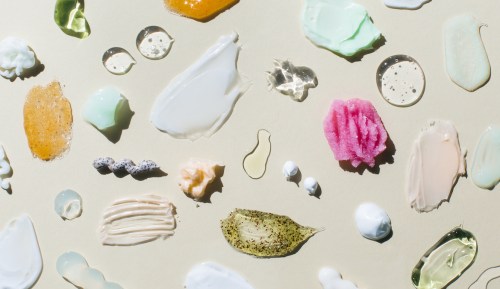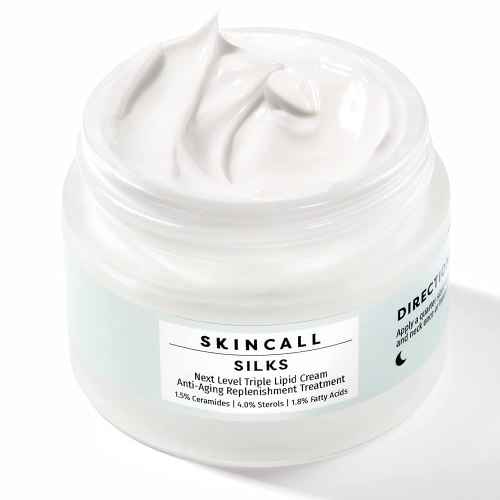Our editors independently select these products. Making a purchase through our links may earn Well+Good a commission
Meet the Drugstore-Priced Skin-Care Brand Making Near-Identical Dupes of The Buzziest Luxury Products
Skincall by Brandefy uses consumer reviews and crowdsourced data to create affordable dupes for luxury skin-care formulas.

In a world where skin-care products can often cost upward of $200, most of us know the feeling of wanting something that’s out of (financial) reach. Thankfully for those of us trying to maintain our beauty routines without breaking the bank, there’s a new company disrupting the industry and making some of the most sought-after luxury formulas accessible.
Enter: Brandefy, a social community and e-commerce platform that uses customer feedback to create value versions of prestige brands.
How Brandefy works
When Meg Pryde, Brandefy’s founder and CEO (and a beauty-industry veteran), noticed a lack of transparency in the beauty space, she crystallized an idea that would change the way consumers shop forever. “There were so many things that I was learning behind the scenes that I thought, ‘If only consumers knew about this!’” she says. When she realized that the right technology and platform could help customers shop better, she launched the Brandefy app.
With an online community of 90,000 people (women ages 24-35 make up the majority), Brandefy gives consumers a place where they can share product feedback and seek beauty advice from other members. According to Pryde, most members use the site to ask each other for recommendations (one of her favorite moments was when someone asked which primer she should wear on her wedding night), but its real point of difference is its comparative product reviews.
Here’s how it works: Brandefy crowdsources reviews on some of the most popular luxury products on the market—like Supergoop Unseen Sunscreen, Laneige Lip Sleeping Mask, and Tatcha Luminous Dewy Skin Mist—and asks users to compare them to drugstore dupes. Then, Brandefy gives the products a “similarity score,” which is calculated based on a slew of factors including color, wear time, finish, and ingredients. As one reviewer puts it, “Brandefy is my go-to before I purchase products. Not only does it save me time and money but it has also educated me so much on the products I use. Plus, you get honest opinions and comparisons.”
For example, The Ordinary 100% Cold Pressed Virgin Marula Oil ($10) is considered to be a 96 percent match to Drunk Elephant Virgin Marula Luxury Facial Oil ($68), and multiple reviewers advise against shelling out for the more expensive formula. On the other side of the coin, while Bliss’s What a Melon Mask ($12) may seem to offer similar benefits to Summer Fridays’ fan-favorite Jet Lag Mask, the two formulas only have a 51-percent comparison score and a number of reviews outlining the laundry list of differences that make the pricier product worth the splurge.
“They’re not saying, ‘Don’t buy X prestige product,’” says Dendy Engelman, MD, a board-certified dermatologist based in New York City who has worked with Brandefy since its inception. “They’re saying, ‘Product X is a really amazing option, but if it’s not accessible to you, here’s a potentially more realistic alternative that will give you similar results.'”
When Brandefy can’t identify a similar-enough affordable alternative to a popular product on the market, they make it themselves, which is where Skincall by Brandefy—the company’s new in-house skin-care line—comes in.
Using data to create affordable dupes
Thanks to data generated by users’ searches, Brandefy identifies gaps in the market based on what consumers are looking for, then uses that information to decide which products they should create. “In general, Skincall aims to produce products with similar formulations to their prestige benchmark products, but with some slight differences in the formula and packaging,” says Dr. Engelman. “The brand provides efficacious yet accessible products where there aren’t affordable alternatives.”
A prime example is SkinCeutical’s best-selling product, CE Ferulic, which sells for $169. Skincall’s $49 version, a 15% Vitamin C , E and Ferulic Acid Serum, has similar amounts of its star ingredients (vitamin C, vitamin E, and ferulic acid) but with a slightly different formulation. Dr. Engelman says that unlike SkinCeuticals C E Ferulic, Skincall’s serum contains propanediol, which serves as a solvent, humectant, and emollient in skincare, and is a gentler alternative to the propylene glycol that SkinCeuticals includes. “Both of these serums are excellent for brightening the skin, defending against environmental aggressors, and minimizing and preventing signs of aging, like wrinkles and sagging,” she notes. When I tried the Skincall serum out myself, I was impressed with how closely it mimicked Skinceuticals texture, color, and signature tackiness, and it made my skin look instantly brighter and more radiant.

Skincall Vitamin CE SkinCare C+E Ferulic Acid — $49.00
Similarly, Skincall’s Silks Triple Lipid Cream ($59) formulation is based on SkinCeuticals Triple Lipid Restore 2:4:2 ($136). While both are packed with reparative ingredients like lipids, fatty acids, and ceramides, Skincall also added pomegranate sterols and squalene for moisturizing benefits, while leaving out SkinCeuticals’ lavender, rosemary, and peppermint oil blend to make the formula more tolerable for sensitive skin.

Skincall Silks Triple Lipid Restore & Repair Cream — $56.00
Skinceuticals isn’t the only brand getting the dupe-ified treatment: Skincall by Brandefy also offers a $25 tinted sunscreen that’s been deemed an 80-percent similarity match to Elta MD’s beloved tinted SPF, and a $24 peptide-and-niacimaide serum that can take the place of Peach & Lily’s Glass Skin Refining Serum (89-percent match) or DRMTLGY’s Needle-less Serum (80-percent match)
C

Skincall Silks Triple Lipid Restore & Repair Cream — $56.00
But how are Skincall’s products so much more affordable than the ones they’re inspired by? Well, that comes down to good ol’ packaging. According to the brand, beauty products typically cost 10 percent of what they retail for, and the packaging is often more expensive than the formula. So if you have a product that is priced at $80, it might cost $8 to make, giving a lot of wiggle room in the budget for marketing (and making the final product look chic on your vanity).
By pulling back the curtain on industry secrets, like this one, the company hopes to empower consumers to make smart choices based on brand loyalty, willingness to experiment, and personal values. Pryde notes that Brandefy’s shoppers aren’t simply looking to save a buck—they’re educated consumers who want value for their money. “[They] aren’t looking for cheap, they are looking for smart,” she says.
And while there will always be a wide consumer base for prestige products, savvy customers now have a new place to shop.
Check out the affordable products a dermatologist swears by in the video below.
Want even more beauty intel from our editors? Follow our Fineprint Instagram account) for must-know tips and tricks.
Sign up for the Well+Good SHOP Newsletter
Get exclusive deals on wellness, beauty, fitness, and food products that have been hand-picked by our editors.
Got it, you've been added to our email list.










